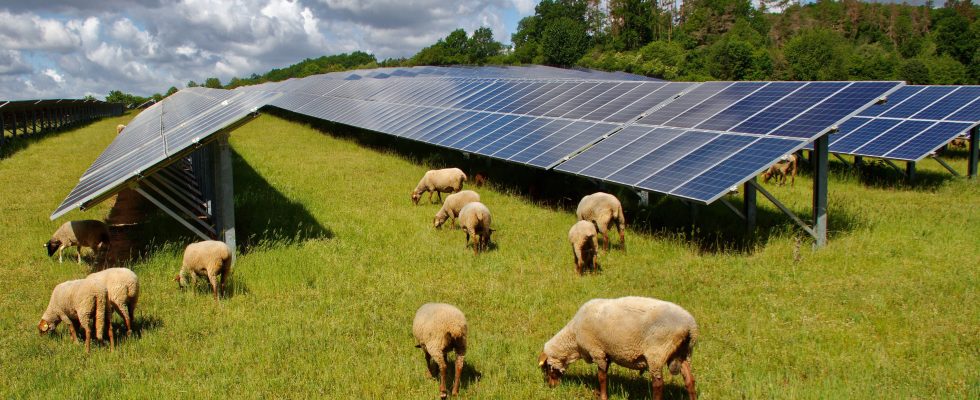Between the world of energy and that of farmers, the rules of the game have been long awaited. On April 9, the government revealed Decree supervising the development of agrivoltaism in France, following long negotiations between the administration, energy companies and the agricultural world. Deemed “imperative” to meet our decarbonization objectives, the installation of solar panels on agricultural installations must make it possible to reconcile two requirements: the acceleration of renewable energy production and the maintenance of agricultural production.
This decree requires that the reductions in yield induced by these solar panels on agricultural land cannot exceed 10% compared to “the average yield” observed on a control plot. It also sets the maximum surface area of agricultural land covered with panels at 40%, except for projects that have proven successful. So many constraints which must make it possible to maintain production, assures the government, but also to offer farmers “a guaranteed stable and risk-free source of remuneration”. “It is also a tool to meet the purchasing power requirements of farmers,” explains the office of Roland Lescure, Minister Delegate in charge of Industry and Energy.
Sharing between owner, operator and energy company
Agrivoltaism, a new windfall for farmers? If the decree does not currently set rules on sharing the value generated by projects, it seems unlikely that our green landscapes will turn into gold. “Agrivoltaism is less profitable for the energy company because the yields are not the same as for classic photovoltaics, so the sharing of the benefits will not be the same either, the sums will not be gigantic”, warns Olivier Dauger, elected member of the National Federation of Farmers’ Unions (FNSEA) in charge of climate, energy and carbon issues.
Depending on the farms, the recommendations of local chambers of agriculture, or the types of projects, the methods of distributing the value vary. The classic scheme is that of a trio made up of the owner of the agricultural land, the operator (who can sometimes be the same as the owner) and the energy company. “There is always the notion of rent, the land is rented to the owner and the operator can receive additional non-agricultural income, which will ensure regularity in his operation,” explains Aline Chapulliot, head of innovative offers at Engie Green, the renewable energy subsidiary of the gas company. The price of this rent comes from discussions between energy companies and the chambers of agriculture most of the time. “Depending on the facilities, the rent varies, but we can estimate an overall range between 2,000 and 2,500 euros per hectare per year, to be shared between the owner and the operator,” explains TSE, a independent French producer of solar energy. Depending on the models, the farmer will receive between 30 and 50% of the rent, the income generated by the sale of electricity belonging to the producer, who can also decide to involve the operator and the farmer in any outperformance. economics of the plant.
Bringing yield gains
Some energy companies also offer farmers, owners, and sometimes agricultural cooperatives the opportunity to take a stake in the company carrying out the agrivoltaic project, thus allowing the different parties to receive dividends on the turnover achieved. “We will push so that the farmer can take part in the capital of the company, so that the price of land is not affected, which makes it possible not to hinder generational transmission,” argues Antoine Nogier, the founder of Sun’ Agri, a company developing solar panel orientation technology.
These remuneration potentials must also be qualified in light of the relatively modest size of agrivoltaic projects. Most energy companies develop infrastructure over a few hectares, between 8 and 10 for most and up to 30 for the largest. “On average the prices amount to 2,000 to 3,000 euros per hectare, this is substantial for certain breeders whose income is sometimes very low, but compared to the average of the projects this does not necessarily represent a very high sum. important”, underlines Olivier Dauger. According to the FNSEA representative, the panels can also provide “positive externalities”, such as the protection of crops against weather hazards, and increases in yields, which help support the operator’s activity. Thus, at Sun’Agri, we ensure that the profit from agricultural activity obtained by these projects is greater, per hectare, than the additional income from the electrical part. “With our photovoltaic shutter systems controlled by artificial intelligence, we have production that can increase between 10 and 30% on cherries, apples, or vegetables,” boasts Antoine Nogier. An argument that could convince in times of climate change.
.
